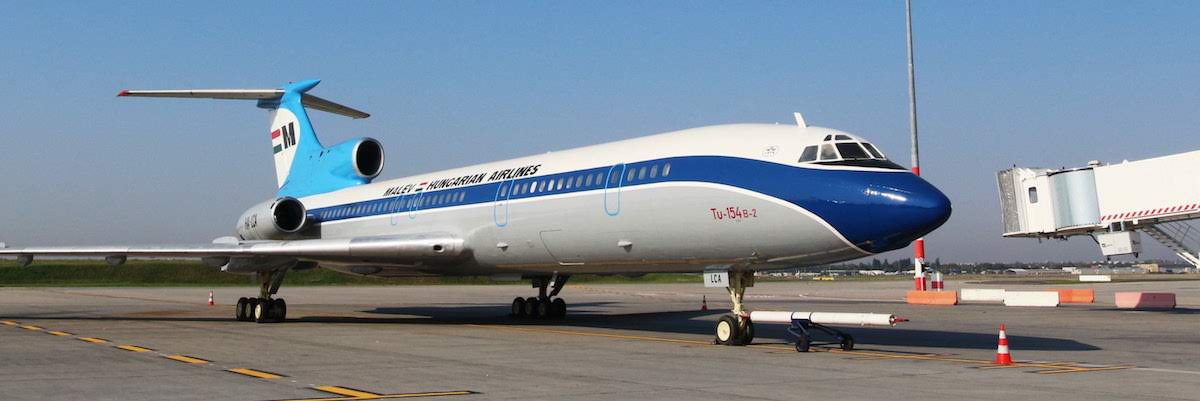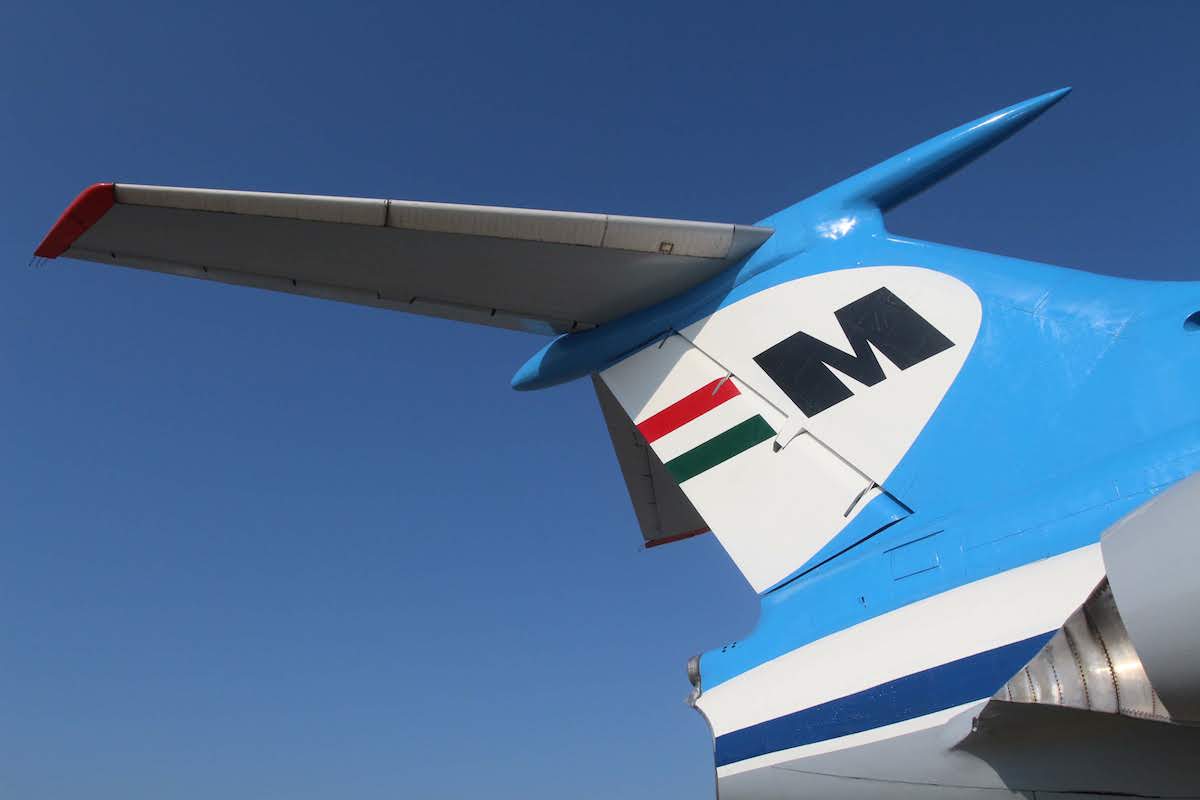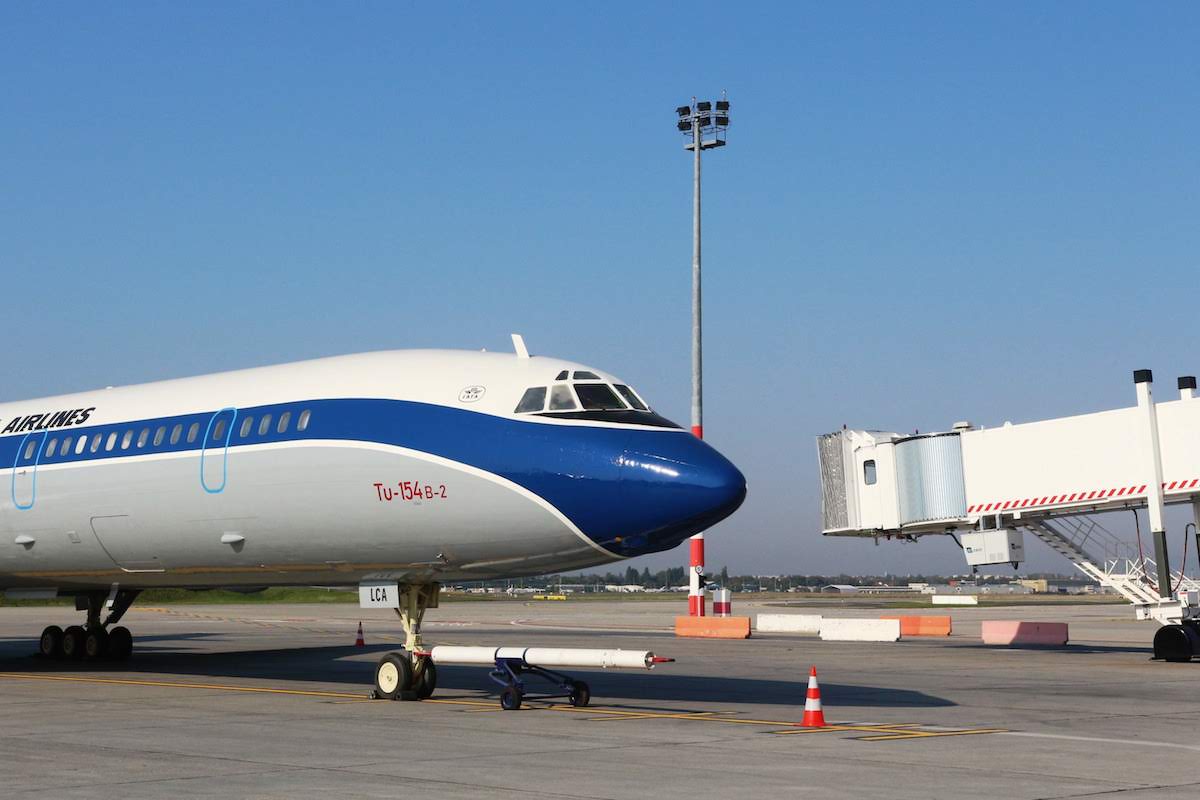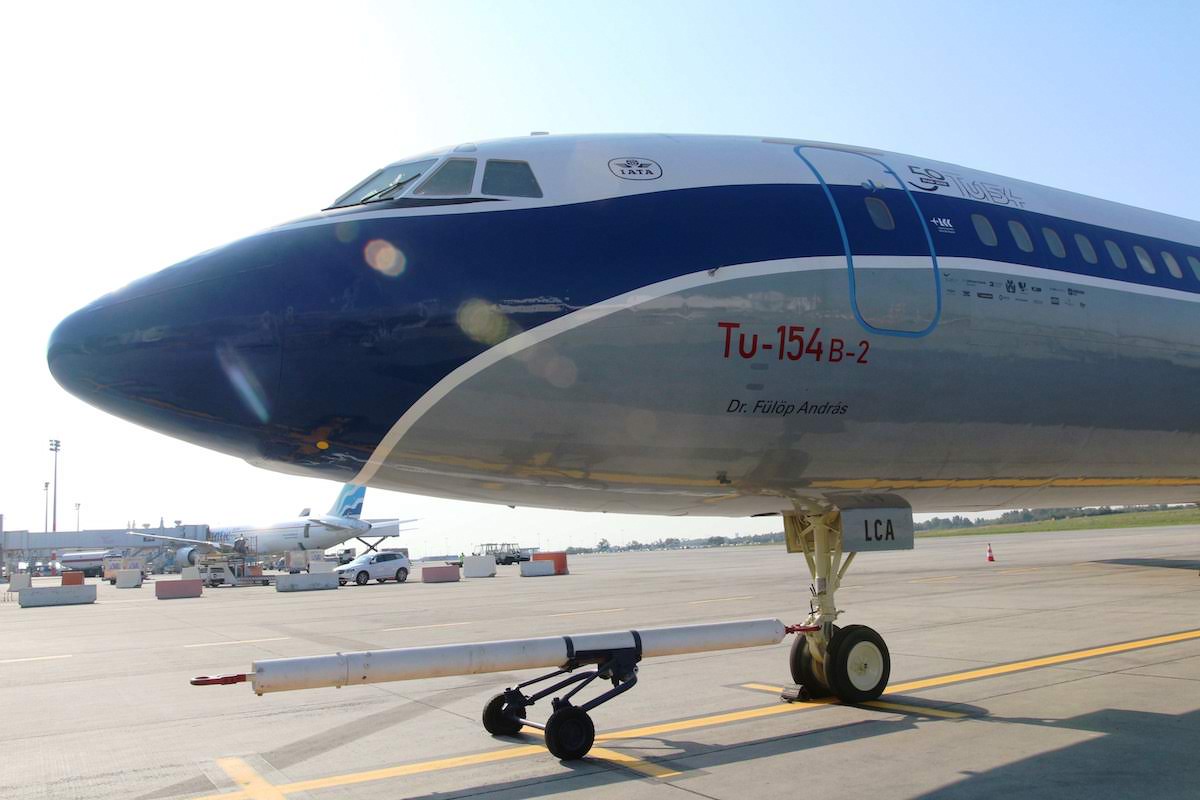Unique Malév Aircraft Makes Surprise Appearance at Budapest Airport

An unbelievable sight welcomes passengers flying from Terminal 2B at Budapest Airport these days; a Tupolev Tu-154B2 type aircraft with immaculate Malév livery is parked at one of the air jetties of the new passenger pier. The unusual spectacle is not a mirage; the recently renovated aircraft was leased by the Aeropark Aircraft Museum to the airport community for training purposes.
The Tupolev Tu-154 in question bears the registration marks HA-LCA, and was the first large airliner in Malév’s fleet. All this happened on 5 September 1973, i.e. the type is celebrating 45 years of service in Hungary. HA-LCA was flown to Hungary by former chief pilot Dr. András Fülöp and crew. The veteran aircraft was therefore recently named after the legendary Malév pilot, and his name was painted on the nose of the aircraft.
The Tu-154, normally a museum exhibit, was repainted to the original Malév livery by the Aeropark’s team of volunteers over the past months, with Lufthansa Technik providing the spray-painting booth for the works. The aircraft is currently without the original Kuznetsov NK-8 engines, which are under procurement. Only a few of the Tu-154 “M” variety are airworthy worldwide, primarily in Russia, China and North Korea.
The new role for the veteran Malév aircraft at Budapest Airport came unexpectedly, after the Aeropark generously agreed to provide the aircraft, so that ground handlers can practice the operation of the new air jetties on pier B. The airliner was towed to the stand, and ground handling staff are now able to practice docking with the new air jetties, manufactured by Thyssen-Krupp in Spain. This solution is beneficial for everyone, since none of the airlines are able to lend a member of their fleet for training, but a museum aircraft is perfect for this purpose. Last but not least, the unique spectacle on the apron is excellent advertising for the Aeropark, an outdoor aircraft museum located at the airport, whose bussed airport tours are also very popular.
“We are very grateful to the Aeropark for this gesture, as it is very important for air jetty operators to practice every detail of the docking procedure. The value of a modern airliner runs into billions of forints, so there is no room for error; colleagues will only be permitted to work with the new air jetties after a successful practical examination,” emphasized Péter Huszka, the chief operating officer of Budapest Airport. “The appearance of an impeccably renovated veteran aircraft with Malév livery is also no ordinary spectacle.” he added.
“We never hesitated to lend this Tupolev aircraft to Budapest Airport; I never thought that ‘LC Aladár’, as we call it based on its registration marks, would be parked on the apron of Terminal 2B once more. The renovation has turned out really well; it was great to photograph the aircraft together with the veteran Lada and Wartburg handling vehicles. We plan to organize additional photo shoots for aviation enthusiasts, at authentic locations,” said Gábor Somogyi-Tóth, the director of the Aeropark, who spent forty years at Budapest Airport, retiring as deputy CEO.
It is an interesting fact about the Tupolev Tu-154B-2 variant that the aforementioned team led by Dr. András Fülöp actually participated in its development, together with Soviet engineers, based on Malév’s needs. This meant rendering the autopilot suitable for receiving signals from an ICAO category II instrument landing system and reducing the crew of five to three. The earlier variants of the Tu-154 required a crew of no less than five members, as the captain and the first officer were joined by a navigator, a radio officer and a flight engineer. In the case of the B-2, the pilots took over the role of the navigator and radio officer, but the flight engineer remained as the third crew member.
The Tu-154 of the Aeropark is expected to remain on display on the airside of Terminal 2B for a few more weeks.



